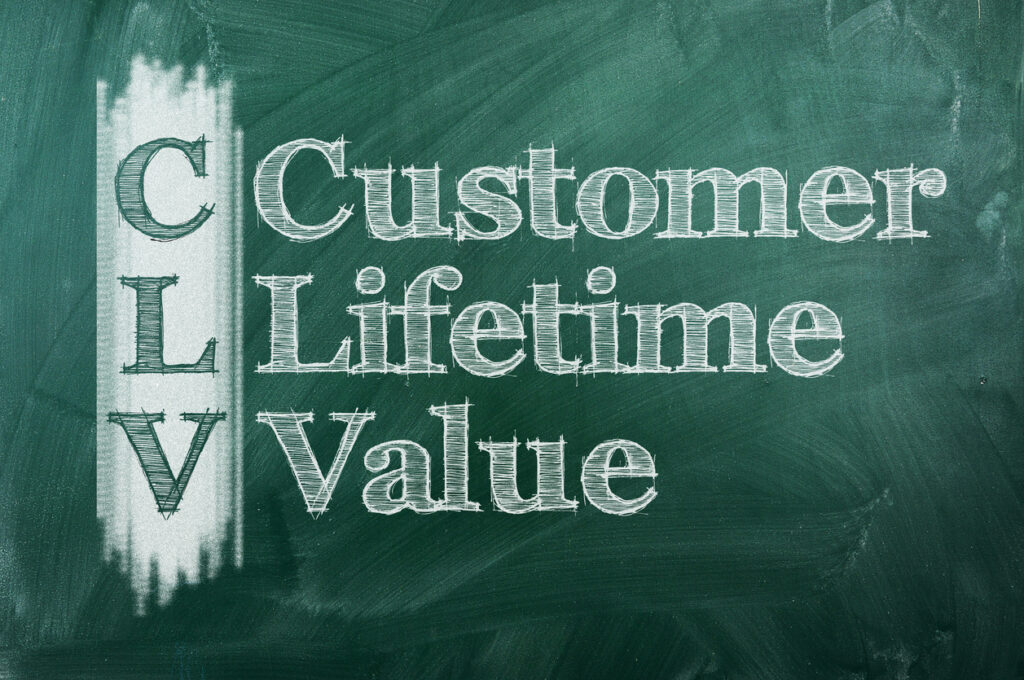Customer Lifetime Value and Contact Centers

Delivering a superior product or service to a particular market is essential for a business, but its success ultimately depends on the customers willing to purchase it. Each customer brings value to a business; some are more valuable than others. So, how do we know the value of a single customer? The term “customer lifetime value” tells us just that.
What is Customer Lifetime Value?
Customer lifetime value, often referred to as CLV or LTV (lifetime value), is simple to understand and calculate. It is the overall value a customer brings to your business when they purchase your goods or services. To calculate customer lifetime value, you must consider the following:
- The customer’s yearly profit contribution
- Average number of years that they have been a customer
- The initial cost of acquiring the customer
Considering these three factors provides the easiest way to determine customer lifetime value. If your business profits $50 each time the customer orders, and the customer places ten orders a year, you will have a yearly profit of $500 from that customer. If your business can retain that customer for three years with the same annual profit, the customer lifetime value would be $1,500. From there, you must subtract the amount of money it took to acquire the customer. Examples of spending include marketing dollars and lead acquisitions.
While the concept of customer lifetime value is easy to comprehend, and its importance is obvious, many businesses do not put much effort into calculating it. Instead, businesses focus their marketing efforts and dollars on acquiring new customers. This is all despite numerous studies proving the cost of bringing in new customers to be higher than retaining existing ones.
Why is Customer Lifetime Value Important?
Calculating customer lifetime value can benefit your business in multiple ways. It uses a simple formula to calculate and requires primary data that is easy to find. Additionally, your business can calculate a single customer’s value or a segment of similar customers (demographic, region, etc.). Aside from the comfort this knowledge provides, it can also:
Save your business money – In today’s market, customer acquisition costs are often higher than customer retention. Using customer lifetime value to see the need for increased focus on customer retention maximizes the value of existing customers. It helps your business avoid the unnecessary cost of replacing them with new ones.
Provide a more sustainable business approach – Emphasizing customer lifetime value sets your business on a more data-driven path. By investing in your customers and their retention, you are taking the steps necessary to improve their experience throughout their lifespan as a customer proactively. Doing this will also help you see the need to focus more on data in other aspects of your business.
Allow your business to place targeted demographics into segments – It is essential to understand each segment because no two are the same. Customer lifetime value allows your business to closely monitor the customer experience for each segment and make targeted adjustments.
Predict profitability – Because customer lifetime value calculates a customer’s worth to your business, you can use it to gauge profitability. Higher CLVs have a more significant impact on your business’s bottom line.
Help foster brand loyalty – Customer lifetime value deals with frequent customer contact. By doing this, your business builds a positive relationship between customers and the brand – giving them a reason to return. Customer lifetime value is also a helpful tool for predicting customer churn. If a customer or demographic maintains a low CLV, they are likelier to abandon the brand.
Customer Lifetime Value and Contact Centers

The main difference between two businesses selling the same product or service is customer experience (CX). Providing the best experience imaginable to customers gives your business an edge over the competition, regardless of your market. The better the customer experience, the higher the customer lifetime value. However, the CX strategy is only complete with an effective customer service team. Contact center agents are specialists on the frontline of almost every customer-brand interaction. Their interactions and performance are essential factors in providing a quality experience for customers at every possible touchpoint.
To emphasize the importance of customer experience, PwC data conducted a study that showed 59% of Americans would abandon a brand if they suffered through several bad experiences. While 17% would do this after one poor interaction, that number increases to 32% when considering customers worldwide. Reviewing these numbers points out the obvious: customer experience can make or break a business.
Whether your business aims to acquire new customers or strengthen your relationship with existing ones, increasing customer lifetime value relies heavily on customer experience. Customer lifetime value is only as successful as your business’s CX strategy. The more effective your strategy, the more likely your investments will result in a greater CLV. To achieve this, it is critical to focus on positive experiences at every touchpoint – especially in contact centers.
How Gold Mountain Stands Out
Focusing first and foremost on our clients, Gold Mountain Communications strives to fully meet the needs of our clients and exceed their expectations. We perform the highest-quality objective work in the contact center industry. Our commitment to producing superior products and services for our clients will continue to be the key to Gold Mountain’s success.
One of the main objectives we practice with our team members is fostering creativity. We emphasize finding creative, inventive ways to solve problems and implement solutions. Thus, we search for unique and creative individuals when hiring Gold Mountain team members.
CONTACT US TODAY TO DISCUSS YOUR CALL CENTER NEEDS.








